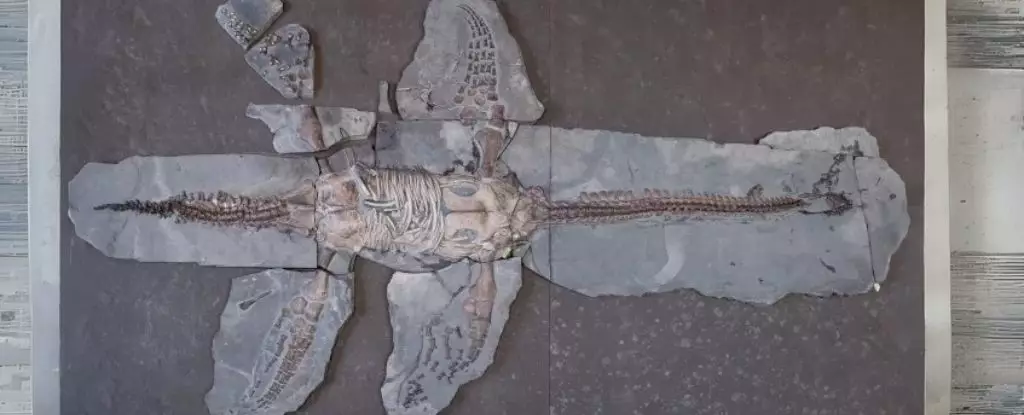In the annals of prehistoric marine life, few creatures have captivated the imagination quite like the plesiosaurs. These remarkable reptiles, characterized by their elongated necks and four flippers, thrived in the Mesozoic seas, establishing themselves as apex predators during the reign of the dinosaurs. Recent discoveries, particularly a well-preserved fossil found in Germany, have shed light on their anatomical adaptations and ecological roles, offering a fascinating glimpse into the lives of these ancient marine hunters.
The fossil in question, a 4.5-meter-long plesiosaur known as MH 7, dates back to approximately 183 million years ago, during the Jurassic period when plesiosaurs were at the pinnacle of their evolutionary success. Excavated from Holzmaden in 1940, the specimen’s journey included a precarious period during World War II when it was buried for safekeeping. However, it was only recently that a team of paleontologists from Lund University, led by Miguel Marx, undertook a meticulous analysis using advanced microscopy and spectroscopy techniques. This approach has allowed researchers to glean unprecedented details about its skin texture and structural composition, significantly enhancing our understanding of plesiosaur biology.
The Role of Flipper Scales
Among the most intriguing aspects of the MH 7 fossil is the discovery of scales on its flippers, reminiscent of the carapace scutes seen in modern sea turtles. These flipper scales are not merely decorative; they likely played a functional role in both swimming efficiency and movement across the ocean floor. Plesiosaurs exhibited behaviors similar to contemporary warm-blooded marine animals, such as bearing live young and breathing air, which leads scientists to propose that these reptilian giants might have been warm-blooded themselves. The integrity of the skin on the plesiosaur’s tail was smooth, yet the presence of small, irregular triangular scales on the foreflippers indicates a sophisticated adaptation to their aquatic lifestyle.
The research team’s comparative study between the fossilized skin of MH 7 and extant marine reptiles reveals fascinating evolutionary parallels. The skin thickness of the plesiosaur corresponded closely with that of living sea turtles, suggesting convergent evolution driven by similar environmental demands. This adaptation may not only have provided hydro-dynamic advantages but also facilitated traction while traversing the seafloor. The implications of such traits are profound—suggesting that plesiosaurs might have employed a bottom-walking technique to graze on benthic organisms, a behavior supported by fossilized gut contents teeming with snails and crustaceans.
Insights into Plesiosaur Evolution and Ecology
Further analysis of the MH 7 fossil unearthed pigment cells near the outer layers of its tail skin. Interestingly, these cells displayed characteristics akin to the corneous beta-proteins found in the scales of modern reptiles. This finding implies that, unlike other marine reptiles such as ichthyosaurs that evolved to lose their scales for increased hydrodynamics, plesiosaurs maintained their reptilian scales post-transition into marine environments. Such adaptations may have been crucial for survival and ecological success, informing us about their evolutionary trajectory within the Mesozoic ocean.
The findings surrounding the plesiosaur MH 7 encapsulate a thrilling chapter in the story of vertebrate evolution. The combination of functional flipper scales, smooth tail skin, and unique reproductive traits provides a compelling narrative of adaptation and survival in the ever-changing marine landscape. These revelations reinforce the notion that plesiosaurs were not just mere relics of a bygone era but were sophisticated creatures that thrived in their ecological niches. As researchers continue to unearth more fossils and utilize cutting-edge technologies, our understanding of these fascinating marine reptiles will undoubtedly deepen, allowing us to piece together the complex tapestry of life during the age of dinosaurs.

Leave a Reply